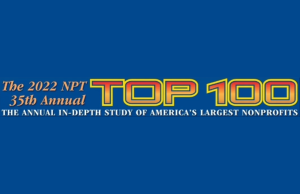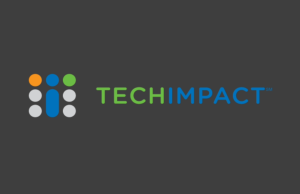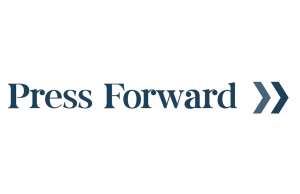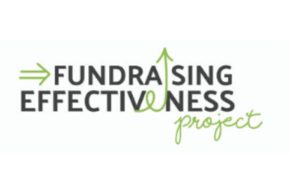President Joe Biden signed the $1.9-trillion coronavirus relief package into law today, a day earlier than expected. The legislation includes billions for nonprofits and public service, such as the Corporation for National and Community Service.
The American Rescue Plan Act (H.R. 1319) passed the House on Feb. 27 in a 219-212 vote. Two Democrats joined 210 Republicans to vote against the bill. The Senate approved the legislation in a party-line vote early Saturday morning, 50-49, with tie-breaker by Vice President Kamala Harris.
Some provisions were eliminated before the legislation made it out of the Senate, including removal of a $15 minimum wage, forcing the bill to go back to the House for approval, which came today by a vote of 220-211. Eight Democrats joined the 50 Republicans to torpedo the minimum wage provision, some for procedural reasons that it should not be part of the budget reconciliation process.
The third federal relief package since the pandemic was declared a year ago, the American Rescue Plan Act includes billions in support for state and local governments and expanded eligibility for the Payroll Protection Program (PPP). Independent Sector highlights some provisions relevant to the nonprofit sector here.
Among the provisions that should be good news for nonprofits is $350 billion in support of state and local governments. “Our partners need to be funded,” said David L. Thompson, vice president of public policy at the National Council of Nonprofits. When governments run out of money, they tend to turn on nonprofits, either to impose work burdens or taxes, he said. “Nonprofits benefitted from moderate concerns about state and local funds because they added guardrails,” Thompson said, as funds can not be used to cover pension plans, deficits or tax cuts.
Faced with a billion-dollar budget shortfall amid the pandemic last summer, New York State delayed payments and held off new contracts with nonprofit service providers as the state seeks relief from the federal government.
Unemployment insurance can be dull but if nonprofits are having to divert $1 million to pay their unemployment bill, it gets attention, Thompson said. The bill extends to Sept. 6 the subsidy for costs incurred by employers, including nonprofits, that provide unemployment benefits on a reimbursable basis versus tax contributions. The subsidy also would increase from 50% to 75% for weeks beginning after March 31. Nonprofits had sought 100% reimbursement.
Credits for paid sick and family leave that were to expire this month under the Fist Coronavirus Response Act would be extended through September. The Employee Retention Tax Credit would be extended through the end of the year.
Nonprofits with more than 500 employees were previously excluded from PPP funding in the December coronavirus stimulus bill. The change will benefit nonprofits, Thompson, pointing to an example of the New York City YMCA, which has 1,600 employees in 22 locations but no one location has more than 500 employees. “You can understand if each of the 22 locations was a freestanding, unrelated Y,” he said, crediting Senate Majority Leader Chuck Schumer (D-N.Y.) with pushing to expand the size eligibility and Sen. Ben Cardin (D-Md.), chairman Senate Committee on Small Business and Entrepreneurship. In rural areas, some nonprofits cover an entire state from one location, Thompson said.
The December stimulus added 501(c)(6) associations as PPP eligible. This latest stimulus would make charities eligible if they employ up to 500 people per physical location and adds another $7.25 billion in funding, bringing the total available to $813 billion.

The Small Business Administration’s Shuttered Venue Operators Grant (SVOG) program — a.k.a., the #SaveOurStages campaign — would get an additional $1.25 billion, including $500,000 set aside for technical assistance to help entities apply for grants. Eligible organizations could apply for both PPP and SVOG but SVOG funding would be reduced by the amount received through PPP. There had been some questions whether organizations could apply for both, but the SVOG’s start date was delayed while the PPP expires March 31. Still, nonprofit leaders are calling for an extension of PPP now that large organizations are eligible but only have two weeks left to apply.
Ben Kershaw, director, public policy and government relations at Independent Sector, described it as “another key ask from our community that Congress didn’t fulfill in full but is really a hard fought, important victory.” The new eligibility based on per-location counts of employees, he said, will “allow a lot of nonprofits to gain access for the first time since it was enacted a long time ago.”
“One thing we’re particularly pleased to see not change is the investment that this bill makes in civic and community infrastructure,” Kershaw said. “We hear a lot about roads and bridges, we feel strongly that nonprofits themselves are civic infrastructure,” he said.
IS and Kaboom! last year founded the Nonprofit Infrastructure Advocacy Group, an informal coalition that set a list of policy priorities, including funding for broadband, childcare, transit, national community service, arts and humanities, and museums. More than two dozen organizations sent a letter to House leadership highlighting support for those provisions right before its passage, Kershaw said, and with a couple of minor tweaks it also passed the Senate.
“That’s a conversation that we certainly expect to continue about civic infrastructure as Congress and the Biden administration looks to the Build Back Better bill,” he said.
The National Endowment for the Arts and National Endowment for the Humanities each will receive $135 million, with 40% to state agencies and 60% as direct grants.
The Corporation for National and Community Service (CNCS) would get $1 billion, of which $620 million will support an increase in AmeriCorps volunteers to respond to communities impacted by COVID-19. Grants will be prioritized based on grantees serving communities disproportionately impacted by COVID-19 and considering the diversity of communities and participants served by such entities, including racial, ethnic, socioeconomic, linguistic, or geographic diversity.
The bill also boosts food assistance programs. The Supplemental Nutrition Assistance Program (SNAP) would have a 15% increase extended through September. The Special Supplemental Nutrition Program for Women, Infants, and Children (WIC) would get $390 million for outreach, innovation, and program modernization. The Secretary of Agriculture would have authority to fund a temporary boost in the Cash Value Voucher up to $35 per month for a four-month period during the pandemic.










